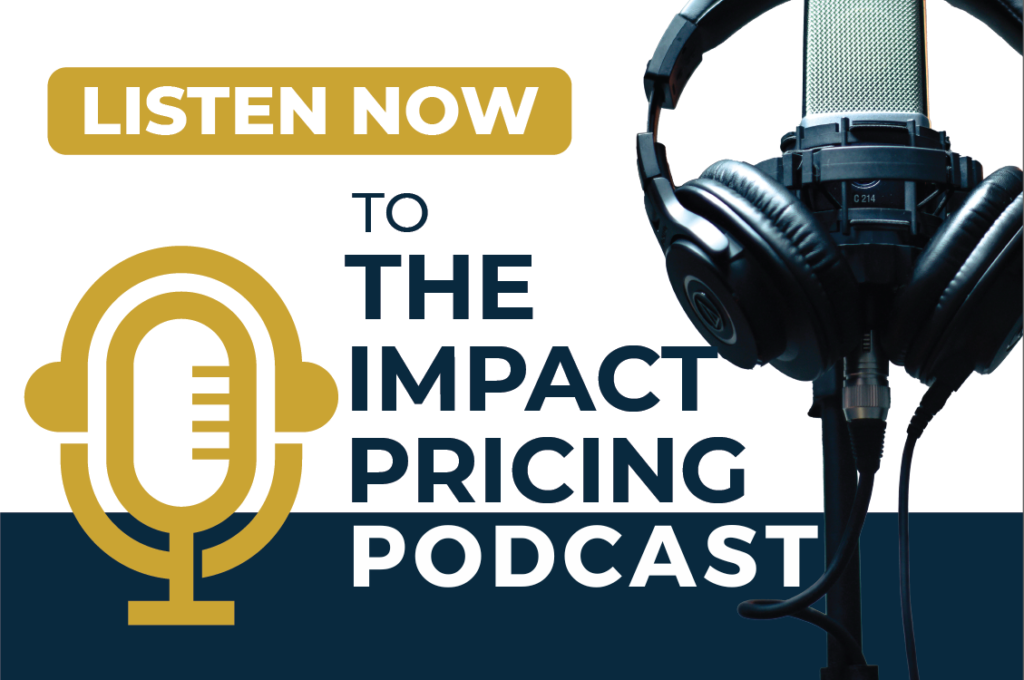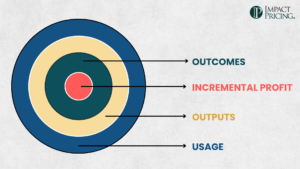You can listen to the full audio version of this blog we call — Blogcast.
I got so excited last week to dive into how to do AI packaging, the frameworks and structure, that I forgot to help you see why it’s so important and powerful. Let’s pretend this one came first.
Packaging and Buyer-Value Fit
Every buyer has a unique context, which defines their problem scope. A small business, a mid-market company, and a large enterprise may all face the same foundational problem, but the scope and details of that problem are very different. The closer a company gets to solving the specific problems a buyer has, the stronger the buyer-value fit.
This principle is especially true in AI. One company may want a lightweight agent to draft emails, while another needs a sophisticated AI system to monitor financial fraud. Both are looking to augment human effort, but the problem scopes — and therefore the value — differ dramatically.
Packaging is the tool that translates this principle into practice. By creating structured versions of a product, companies give buyers a way to see themselves in the offer and choose the version that best matches their context. Packaging lives in the problem scope layer of the value architecture, alongside pricing metrics. Both are inseparable, and both are critical to capturing value in AI.
Who Cares About Packaging?
Packaging decisions touch nearly every stakeholder.
- Product leaders need packaging to ensure their AI solutions align with buyer contexts. Without clear packaging, the product may feel either too generic or too overwhelming.
- Pricing leaders rely on packaging to capture more of each buyer’s willingness to pay. In AI, per-user, per-transaction, or per-token pricing only makes sense when paired with clear packages that set expectations. Misaligned packaging creates confusion and makes costs feel unpredictable.
- Executives and investors need to understand whether the company is monetizing through broad platforms or through focused AI solutions, because this shapes scalability and profitability.
- Buyers are directly impacted. In AI especially, packaging determines how comfortable they feel experimenting with a new technology. Clear bundles, trials, and tiers give them confidence. Without this clarity, adoption slows.
Goals of Packaging and How It Creates Value
At its heart, packaging is about aligning offers with buyer context to ensure value-buyer fit. Here are ten ways packaging creates value.
Enable buyer-value fit
Packaging aligns the offer scope with each buyer’s unique context and problem scope. In AI, this might mean offering a basic text-generation agent for one context and a multi-agent workflow engine for another.
Guide the “Which One?” decision
Buyers want to know not just whether to buy, but which version to buy. Packaging provides structured choices that give buyers the confidence to self-select the right solution.
Expand market coverage
Different buyers face the same foundational problem in different contexts. Packaging allows companies to serve both narrow and broad problem scopes without diluting focus, increasing total market coverage.
Differentiate willingness to pay
Willingness to pay depends on context. A casual AI user might be satisfied with a capped, low-cost plan, while an enterprise automating compliance monitoring will pay much more. Packaging creates clear tiers that align with those differences.
Protect profitability
Unlike SaaS, AI has significant operating costs. Some buyer contexts generate disproportionately high usage or computational demand. Packaging provides guardrails that prevent a handful of heavy users from eroding margins, which is why unlimited AI plans are rare.
Communicate buyer fit
Packaging signals who the product is designed for. Labels like “Starter,” “Professional,” or “Enterprise” help buyers instantly recognize where they belong and reassure them that the solution matches their context.
Encourage upgrades
As buyer contexts evolve and problem scopes expand, packaging provides natural paths upward. A company may start with a single AI copilot but later expand into a suite of specialized agents as their needs grow. Clear upgrade paths keep buyers engaged and willing to grow with you.
Simplify buying decisions
Buyers often struggle with too much choice. Packaging reduces cognitive load by organizing options into clear, structured bundles that are easier to compare. Confused buyers don’t buy, and AI products can feel especially intimidating if the packaging is unclear.
Create modular flexibility
Not all buyers fit neatly into tiers. Packaging can offer add-ons or a la carte modules so unique AI contexts can still be served without redesigning the core structure. For example, an AI platform might sell specialized fraud detection or HR agents individually.
Support pricing metrics
Packaging works in tandem with pricing metrics. Packaging defines what buyers purchase, while metrics define how they pay. In AI, this connection is especially important. A Good-Better-Best structure paired with per-token pricing tells a very different story than one paired with per-user pricing.
Decisions Leaders Must Make About Packaging
Packaging requires deliberate choices. Leaders cannot simply throw AI features into bundles and hope buyers make sense of them. They must design offers that reflect buyer contexts while aligning with the company’s ability to capture value.
Define the segment first
Every packaging decision begins with segmentation. Without a clearly defined foundational problem, packaging has no anchor.
Design versions to reflect buyer contexts within the segment
Create multiple versions of the product to match different problem scopes. This ensures value-buyer fit while also capturing higher prices from buyers willing to pay more. Leaders often iterate between AI placement (native, feature, tier, add-on, platform) and frameworks (Good-Better-Best, Add-Ons, A La Carte) until they find coherence.
Align packaging with metrics
Packaging and metrics must work together to reflect value. In AI especially, misalignment between packaging and metrics can make usage feel either unfair or unpredictable.
Salesforce as a Case Study
Salesforce illustrates the power of packaging decisions in the AI era.
At the highest level, Salesforce is a platform. But its real monetization happens with solutions for different market segments. It offers distinct clouds such as Sales Cloud, Service Cloud, and Marketing Cloud, each aligned with a clear market segment and foundational problem.
Within each solution, or cloud, Salesforce uses multiple packaging strategies. Good-Better-Best tiers enable companies to select the version that best matches their problem scope. Add-ons and a la carte modules provide flexibility for specialized needs.
Take Sales Cloud as an example. Its foundational problem is helping sales teams manage customer relationships and close deals. Yet the problem scope varies widely depending on the context:
- A small business might only need basic contact management and opportunity tracking.
- A mid-market company may want forecasting, pipeline visibility, and territory management.
- A global enterprise could require advanced customization, AI-driven insights, and integration with dozens of other systems.
Salesforce packages these scopes into clear tiers: Essentials, Professional, Enterprise, and Unlimited. Essentials covers the basics for small teams. Professional adds forecasting and dashboards for more complex organizations. Enterprise unlocks deeper customization and automation. Unlimited provides advanced capabilities, premier support, and the broadest scope.
On top of these tiers, Salesforce offers add-ons such as CPQ (configure-price-quote), advanced analytics, and industry-specific modules. These extend the product for contexts where the base tier alone isn’t enough.
Einstein AI is layered into Sales Cloud in two different ways. Some features are embedded directly, such as predictive lead scoring or opportunity insights. Others are sold explicitly as add-ons, like conversational intelligence for analyzing sales calls. This dual approach demonstrates how AI can be both invisible (enhancing existing features) and visible (as a named module), depending on the packaging strategy.
The brilliance of Salesforce’s packaging is that it reflects buyer-value fit across many contexts. A startup can begin with Essentials, then upgrade to higher tiers as its needs grow. Enterprises with complex problem scopes can justify Unlimited. Buyers who need specialized functionality can pick the add-ons that match their context. At every stage, Salesforce provides a clear path upward while capturing more willingness to pay from buyers with broader scopes and higher-value contexts.
The lesson from Salesforce is clear: thoughtful packaging, grounded in segmentation and problem scope, enables a company to align versions with buyer contexts, balance costs, and maximize revenue. So whether you’re embedding AI as a feature, offering it as an add-on, or building an AI-native solution, the principles of Salesforce’s packaging provide a roadmap for creating value-buyer fit.
Practical Takeaways
Start with the segment: Packaging makes the most sense when tied to a foundational problem.
Create versions for various problem scopes: In AI, a single foundational problem like “reduce customer support costs” might be packaged as a simple chatbot for some buyers and a multi-agent automation system for others.
Be intentional with placement and frameworks: Decide whether AI (or agents) are native, features, tiers, or add-ons, then structure them with proven frameworks.
Align packaging with metrics: Packaging and metrics must work together to reflect buyer value and protect profitability. A misfit between the two is especially painful in AI.
Protect profitability: Guard against packaging choices that enable runaway AI usage without capturing value.
Share your comments on the LinkedIn post.
Now, go make an impact!
 Tags: ai pricing, pricing, Pricing AI, pricing foundations, pricing metrics, pricing skills, pricing strategy, value
Tags: ai pricing, pricing, Pricing AI, pricing foundations, pricing metrics, pricing skills, pricing strategy, value













